site search
online catalog
IRISH LEGION, PHOENIX REGIMENT, 4th REGT EMPIRE BRIGADE, CORCORAN ZOUAVES, ETC.: PRESENTATION SWORD OF JOSEPH E. EBLING!

Hover to zoom

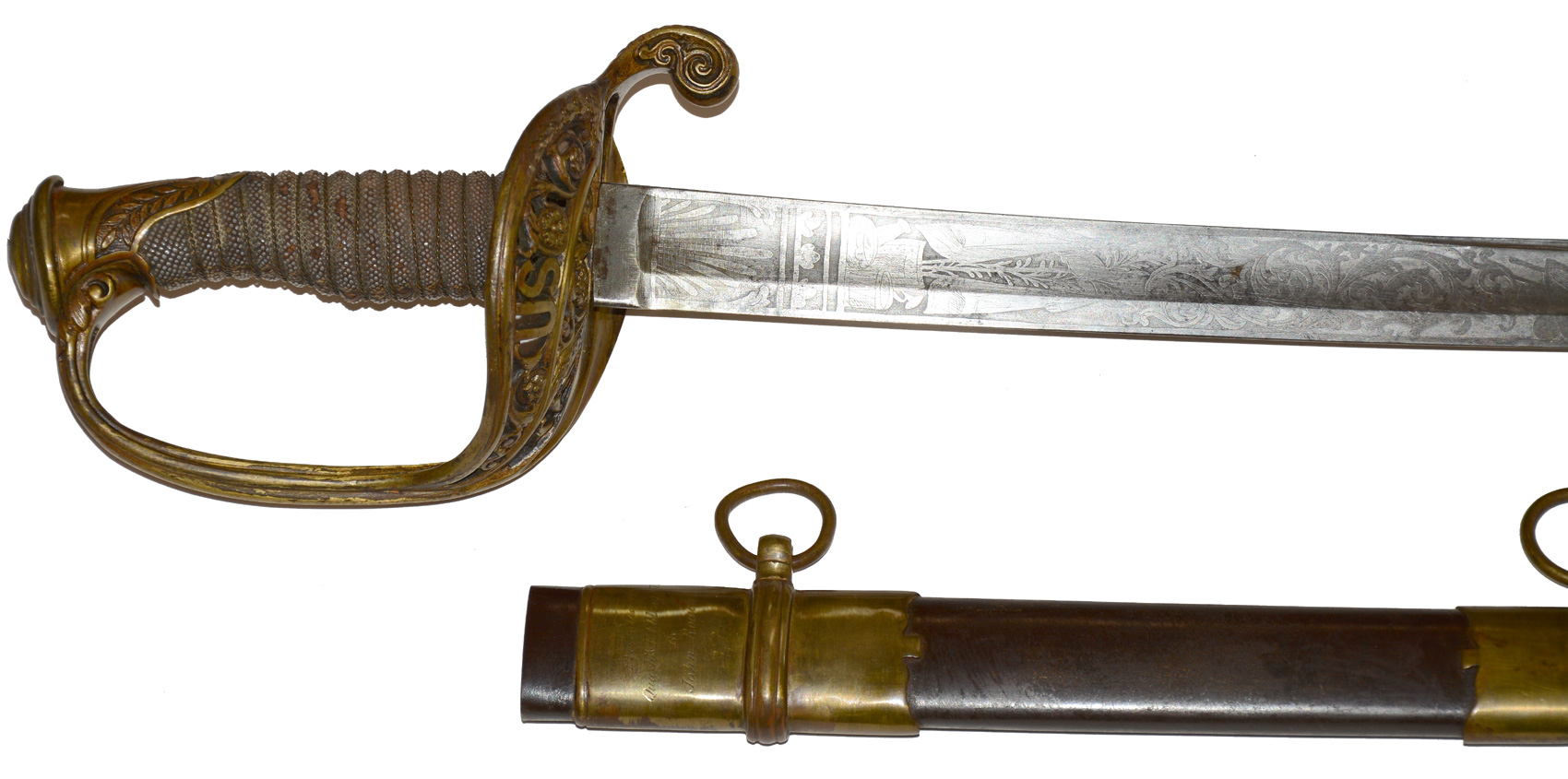

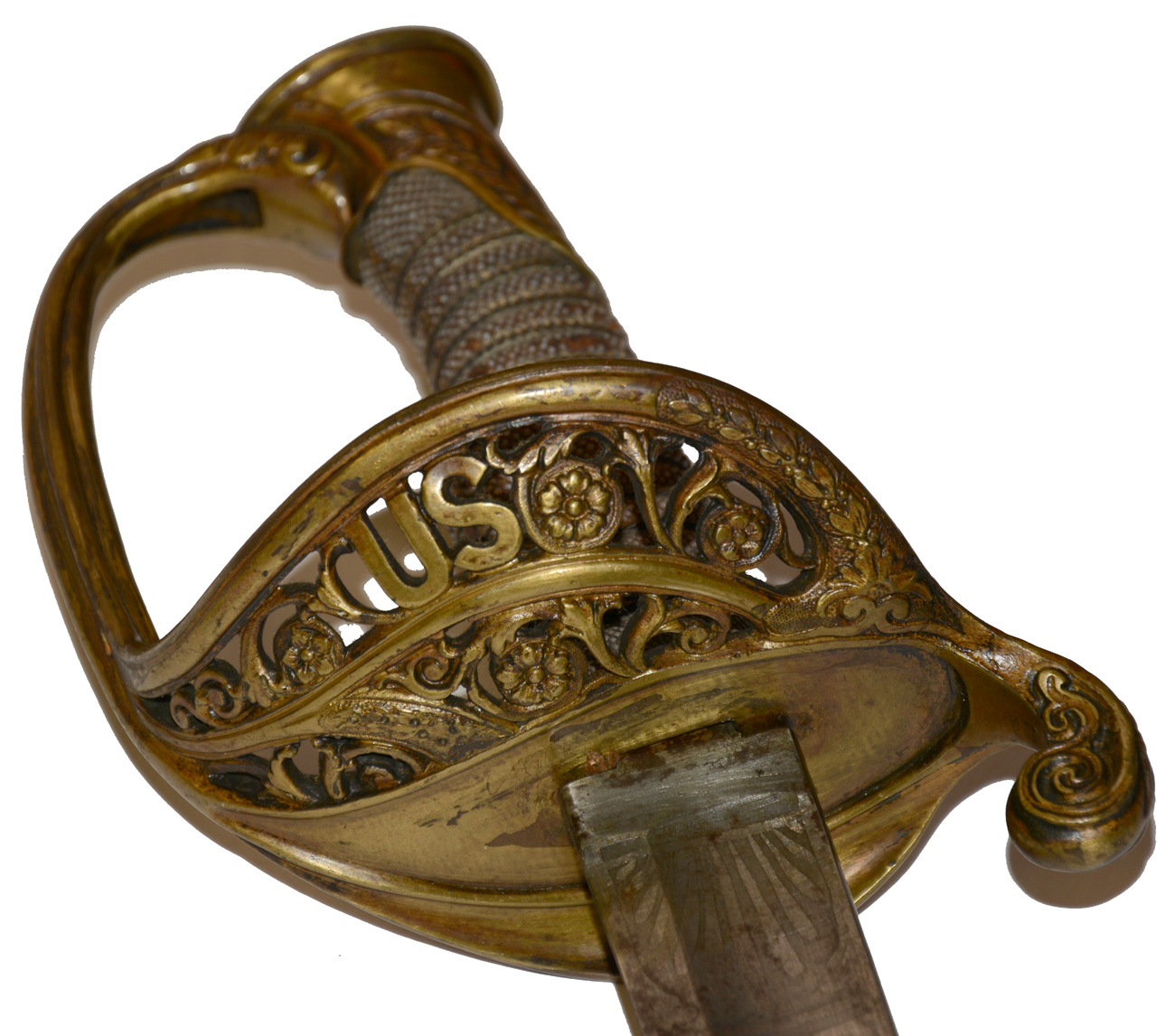
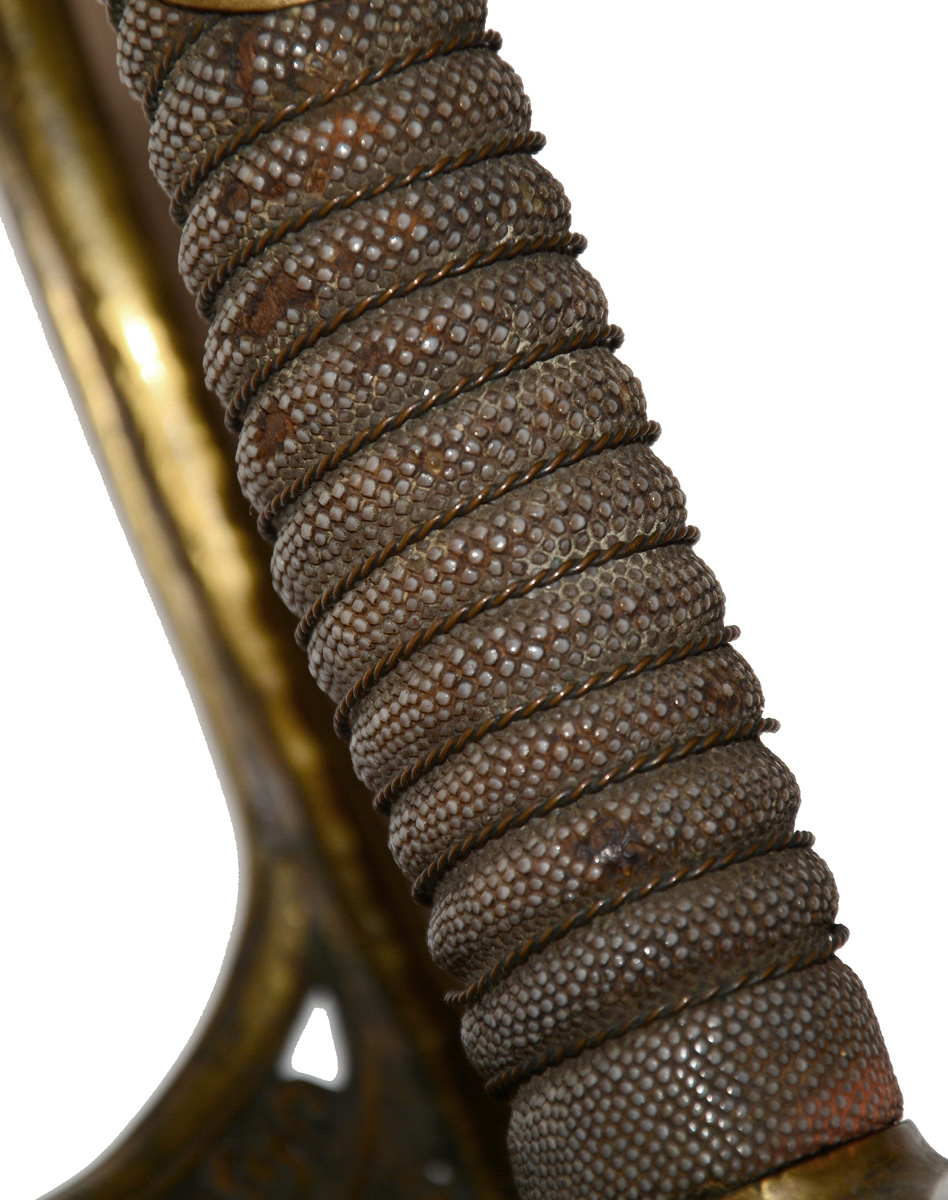
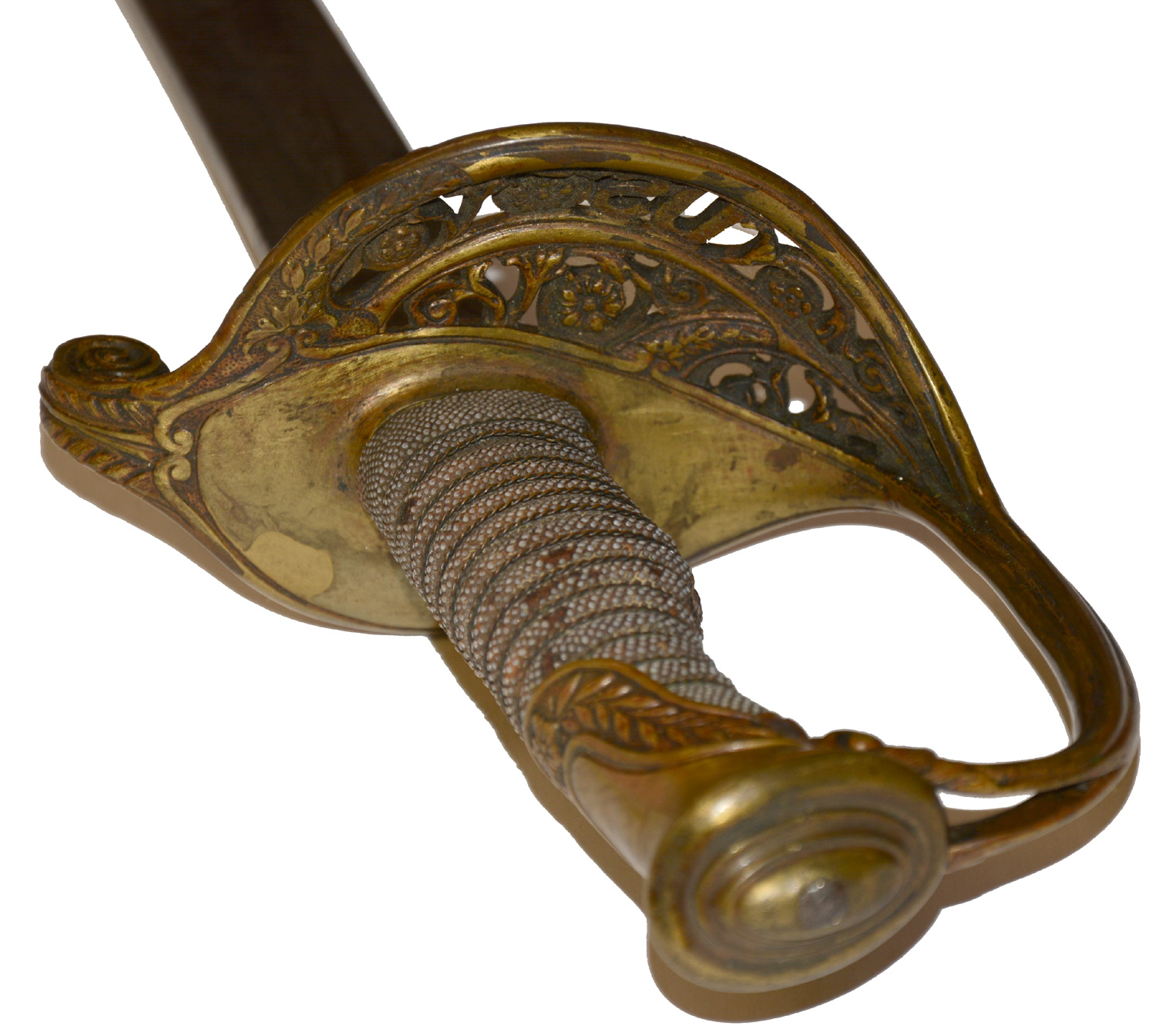
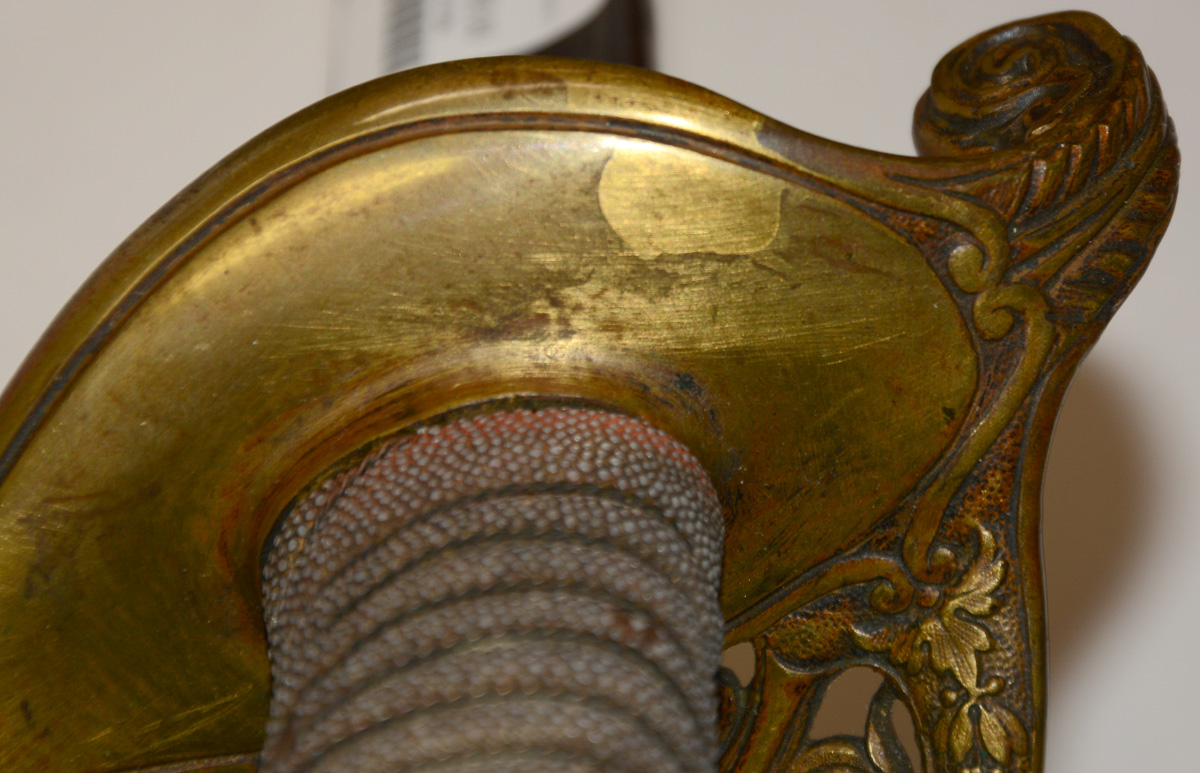
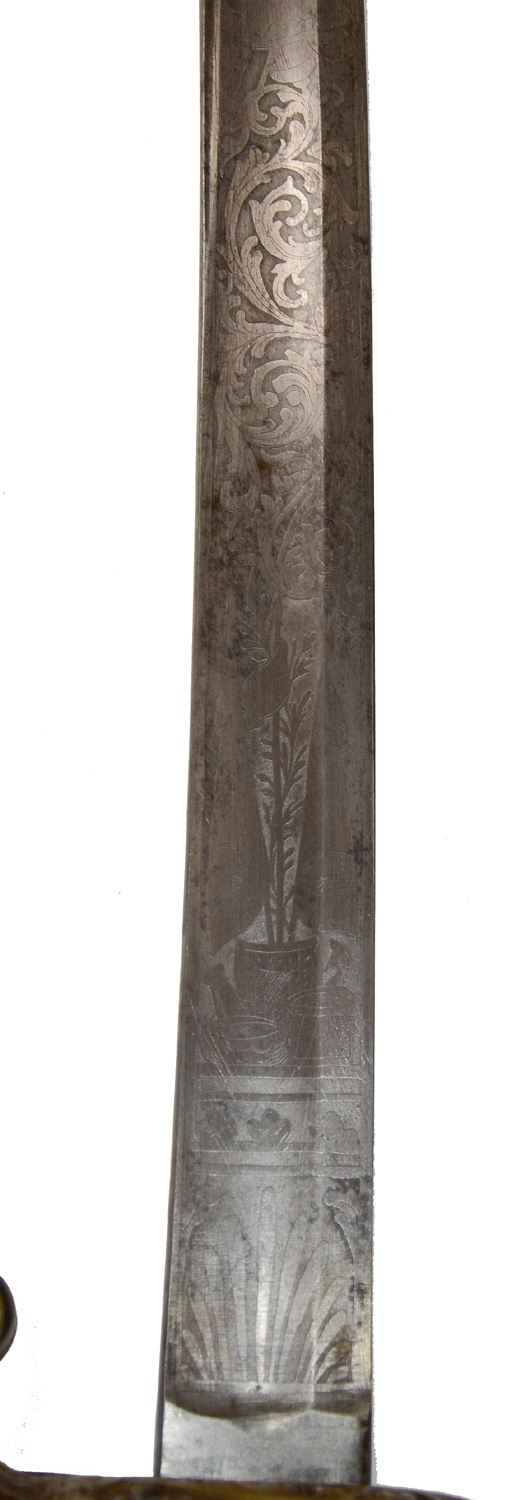

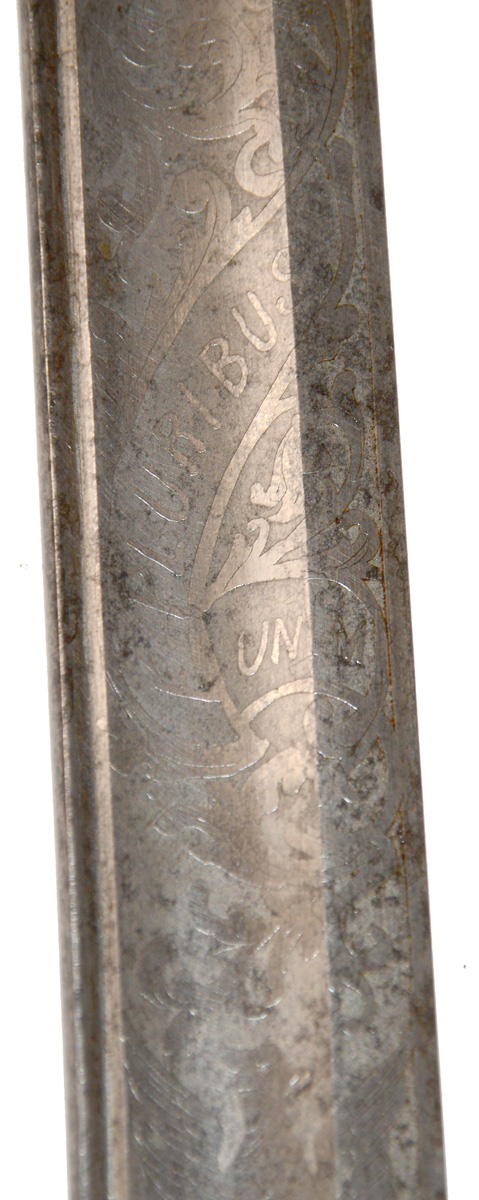
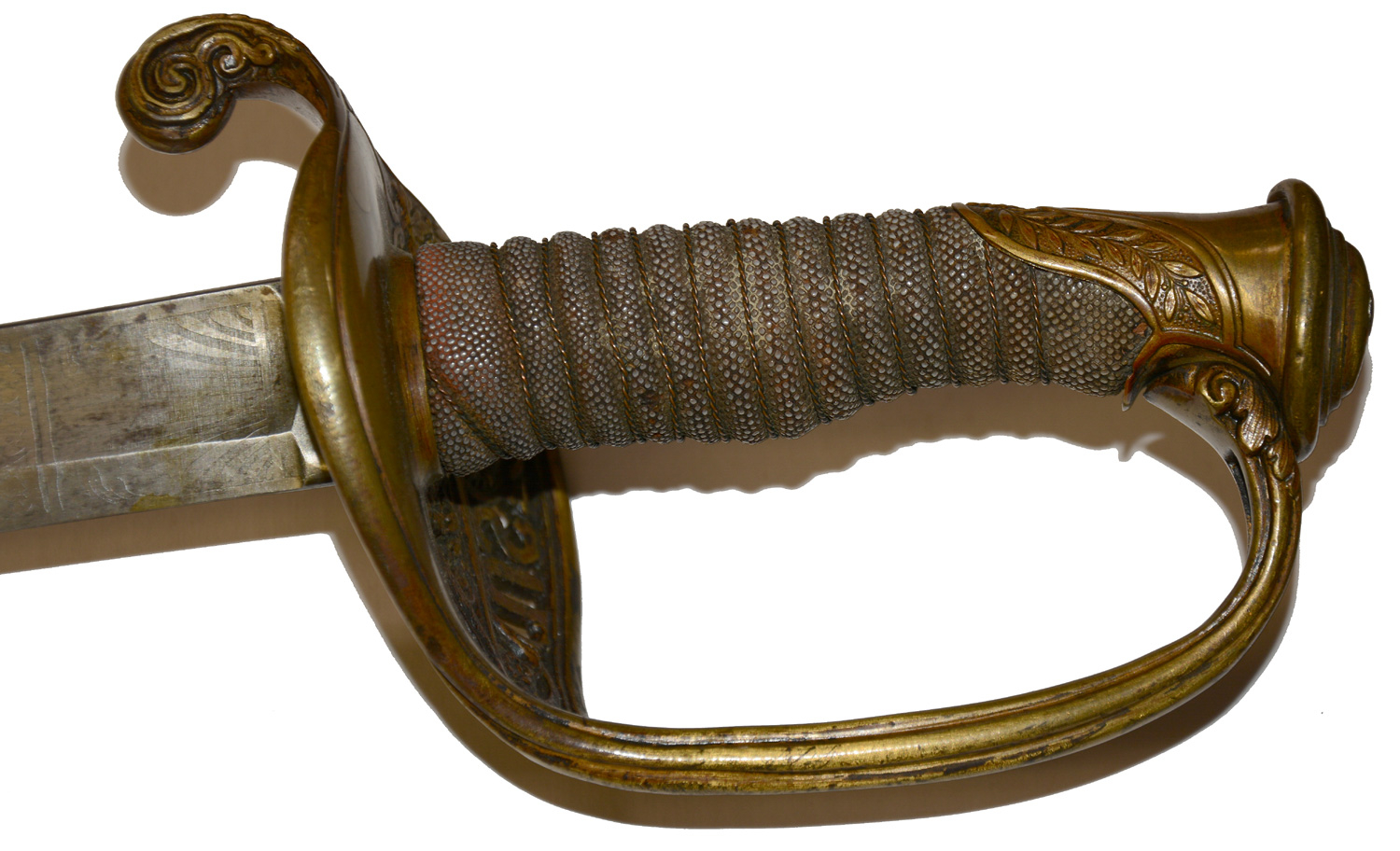





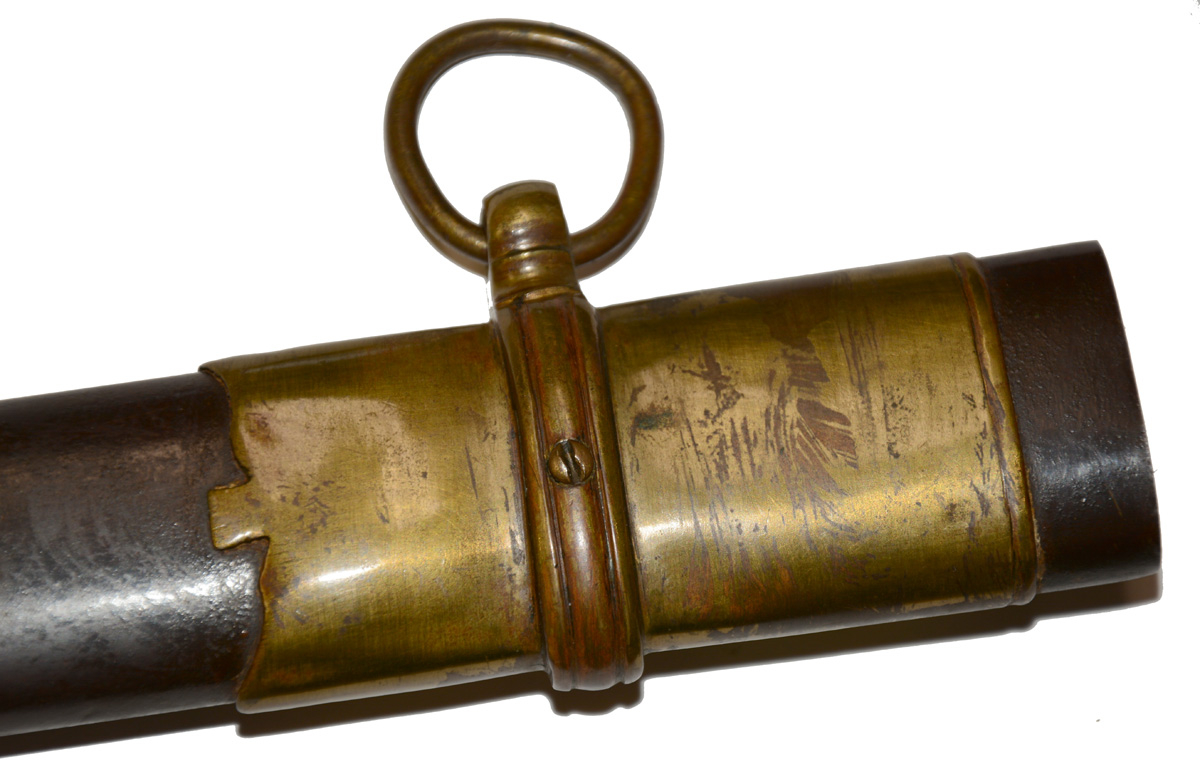

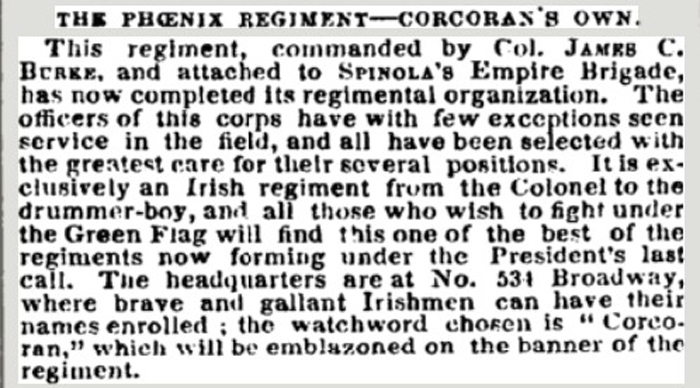
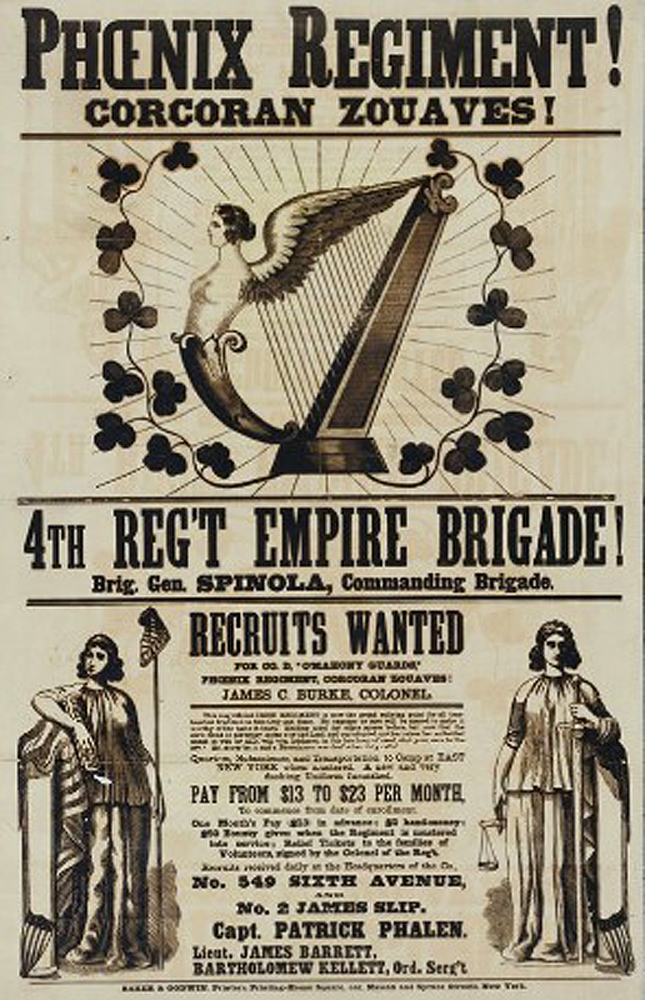
$2,750.00
Quantity Available: 1
Item Code: 172-5736
Shipping: Determined by Method & Location of buyer
To Order:
Call 717-334-0347,
Fax 717-334-5016, or E-mail
Joseph E. Ebling helped raise the Phoenix Regiment, recruited largely among men of Irish extraction in New York City and otherwise known as the Corcoran Zouaves, the Irish Legion, 4th Regiment Empire Brigade, 7th Regiment Corcoran’s Irish Brigade, and eventually as the 164th New York. A July 25, 1862, newspaper article lists him and James C. Burke as confirmed by the Governor as the regimental adjutant and the colonel. He seems to have switched posts soon after to become regimental quartermaster, which was then back-dated as effective July 23, 1862. This was a little over one year to the day his son was killed at First Bull Run while serving with the 11th New York, Ellsworth’s old New York Fire Zouaves.
His sword is a regulation M1850 Staff and Field Officer’s Sword, appropriate for an adjutant or quartermaster, professionally engraved on the upper scabbard mount: “Presented to / Qua. Jos. E. Ebling N.Y.V. / By / John Roach,” with the placement of the unusual abbreviation for quartermaster and the “N.Y.V.” suggesting they were last minute additions as Ebling changed posts or settled on one. His background in business and New York City government bureaucracy may explain his assignment as quartermaster and identify the presenter.
Joseph Eugene Ebling (1818-1868) is listed as a confectioner in New York city in an 1839/40 city directory and the 1850 census. In 1854, however, his fortunes took an upturn with election as Commissioner of Streets (and street lamps,) which shows not only organizational talent, but political connections in the welter of competing city, county, and state appointees in the city who purchased power and sold influence. (The City Council did not acquire the nickname of “The Forty Thieves” for no reason.) It may also identify the presenter as the John Roach, head of the Etna Iron Works in New York in the mid-1850s, who later made a fortune in manufacturing engines and building ships. As early as 1862 Roach was able to post a $300,000 bond to secure contracts for iron work on a new Harlem bridge.
We have no direct proof he is the donor, but Ebling would have been helpful in gaining contracts for city iron work. As Commissioner of Streets and Lamps he reviewed bids on street lamps and gas mains to be installed above 79th Street. At the very least his contacts and knowledge of the city government would have been useful. But he also had an eye for the main chance: he was twice tried, but not convicted, for soliciting a kickback in awarding a city contract. He lost his job when his post was abolished, but his knowledge of the system may have completed his transition from confectioner to gentleman, the occupation he listed in the 1860 census, along with real estate valued at $15,000 and a personal estate of $5,000. He also came to enjoy racing miniature yachts in the waters off New York City as a member of the Harlem Model Yacht Club. If we have the right John Roach, a sword would have been a small token of appreciation for his help in negotiating the city bureaucracy, so to speak.
The sword is the regulation pattern, having a brass hilt with open work floral guard and floating “U.S.” It has an even medium patina and no bends or breaks. The sharkskin grip wrap is complete, though with a few small wear spots. The twisted wire binding is in place, just a little loose. The etched blade motifs include a palmette at the bottom, followed by a stand of arms and other martial motifs mixed with floral scrolls and a “U.S.” on the reverse and an eagle with E PLURIBUS UNUM ribbon scroll over head. The eagle is similar to an Ames eagle, but we see no maker’s marks on the sword or scabbard and it is likely an import. The blade pad under the guard is missing. The blade itself has a good edge and point. The metal is smooth and generally gray mixed with dark gray areas, but the etched motifs are visible and quite legible. The scabbard is the regulation brass mounted metal scabbard. The scabbard body is a mix of brown and plum with some crustiness to the surface. The ring mounts are both in place and relatively plain. The upper mount is somewhat brighter from handling. The lower ring mount shows some muted gilt finish, as does the drag, which also has some dings, rubs, and scratches. There was certainly also a narrow throat, now missing.
Ebling’s motives in joining the army will never be known fully. The cynical might point to a quartermaster’s chances for personal gain in handling public property, but we find him involved in pro-Union meetings in 1861 and he had lost a son. Grief, guilt or revenge may have combined with patriotism to make him enlist at age 46. He resigned a few months later and was discharged to date October 2, 1862, but his early post on the unit’s regimental staff means that he played an important role in recruiting and readying it for field service and was responsible in part for any of its later successes. After discharge, Ebling returned home to his family and may have suffered losses in the New York City draft riots of 1863. His wife died that Fall. He himself died of heart disease in 1868 and was buried in Green Wood Cemetery. He left behind a nice officer’s sword that might have even more tales to tell. [sr] [ph:L]
~~~~~~~~~~~~~~~~~~~~~~~~~~~~~~~~~~~
THIS ITEM, AS WITH ALL OTHER ITEMS AVAILABLE ON OUR WEB SITE,
MAY BE PURCHASED THROUGH OUR LAYAWAY PROGRAM.
CLICK HERE FOR OUR POLICIES AND TERMS.
THANK YOU!
Inquire About IRISH LEGION, PHOENIX REGIMENT, 4th REGT EMPIRE BRIGADE, CORCORAN ZOUAVES, ETC.: PRESENTATION SWORD OF JOSEPH E. EBLING!
Most Popular
Historical Firearms Stolen From The National Civil War Museum In Harrisburg, Pa »
Theft From Gravesite Of Gen. John Reynolds »
Selection Of Unframed Prints By Don Troiani »
Fine Condition Brass Infantry Bugle Insignia »
Large English Bowie Knife With Sheath 1870’S – 1880’S »
Imported (Clauberg) Us Model 1860 Light Cavalry Officer's Saber »
featured item
WORLD WAR TWO / KOREA UNITED STATES MARINE CORPS OFFICER’S MAMALUKE SWORD
The drawn sword meas. approx. 36.00 inches long. The blade itself meas. approx. 31.00 inches long x 0.75 of an inch wide at the ricasso. It has a central fuller that starts just above the ricasso and runs for approx. 27.00 inches. The blade surface… (2021-944). Learn More »


